The new gene-editing tool Crispr is taking the scientific world by storm, reports Katrina Megget

Imagine a world where there is no cystic fibrosis, HIV or malaria; where crops are drought-resistant and parents no longer have to worry that their children may inherit a nasty disease. It might seem far-fetched – utopian even – but this is a potential reality thanks to a gene-editing technique that was discovered just three years ago.
The technique, known as Crispr (clustered regularly interspaced short palindromic repeats), is an advance on previous gene-editing techniques. In principle, it is more precise, faster, easier and cheaper, with the ability to delete, repair or replace genes. It’s considered such an upgrade that the scientific world, from human biology to agriculture, has jumped on the discovery with gusto.
Thomson Reuters’ analysis of hot research at the start of 2015, for instance, noted three Crispr papers in the top 10 most cited publications, while gene-editing start-ups have emerged with investment in the tens of millions of pounds. Companies are now competing to take commercial advantage of the tool, and a Nobel prize is touted as imminent. ‘The potential is really enormous,’ says Alexander Marson, clinical fellow at the University of California, San Francisco, in the US. ‘The rate of application and development is astounding, from basic science right through to clinical applications.’
The hype around Crispr has been phenomenal, and to a large extent warranted. Medical scientists can see a not-too-distant future where previously untreatable genetic conditions will have new therapies and many diseases could even be eliminated. Meanwhile, agricultural solutions to feeding the burgeoning human population are now within reach and biofuels could become commonplace.
What is Crispr?
It’s odd to think this all resulted from bacteria. There, scientists found DNA sequences that were repeated and interspersed with unique sequences, becoming known as Crispr. Further research identified the unique sequences as viral DNA, which had come from phage viruses that infect bacteria. The bacteria were essentially keeping a record of viral infection, forming part of their nifty microbial immune system. The other part was located near to the Crispr sequence; genes coding for enzymes known as Cas (Crispr-associated proteins), which have DNA-cleaving ability.
The hype around Crispr has been phenomenal
The viral DNA sequences are copied into an RNA strand and linked with a Cas enzyme. The resulting molecules float through a bacterial cell on the lookout for viral DNA that specifically matches their RNA strands. A match results in the RNA and viral DNA pairing, allowing the Cas enzyme to whir into action and snip the viral DNA up, stopping the viral infection in its tracks.
This bacterial satnav and scissor combo has been exploited to become a genome-editor extraordinaire, targeting specific genes in any organism with the ability to delete, repair or replace them. All scientists need to do is synthesise a guide-RNA (gRNA) molecule of about 20 bases that matches the target gene sequence and link it to a Cas enzyme, of which there are many. The Cas enzyme most commonly used is Cas9 – from the bacteria that cause strep throat – because of its high efficiency and ability to create a double stranded DNA break. This gives rise to the Crispr–Cas9 nomenclature, though this system is often just referred to as Crispr.
The gRNA–Cas9 complex then targets the specific gene to be edited through RNA–DNA base pairing and Cas9 makes the cut. One cut deactivates the gene. Two cuts, with two gRNAs, remove the gene. If the gene was faulty, it can then be repaired by adding a normal copy of the gene to the cell, which pairs up with the cut DNA ends to form one DNA molecule again. New genes can also be inserted into the genome in this way. Multiple gRNAs can also induce multiple cuts simultaneously, editing more than one gene at the same time.
Correcting or replacing a dysfunctional gene can, in principle, result in normal gene expression and full correction of a disease, says Bill Lundberg, chief scientific officer at gene-editing start-up Crispr Therapeutics. ‘Rapid adoption of Crispr–Cas9 by the broader academic community and the collective efforts of their research are in turn driving tremendous progress in the field,’ he says. ‘It’s an exciting time for our industry.’
Transforming science

The transformative potential of the technology is vast, says Anette Breindl, senior science editor at Thomson Reuters BioWorld. ‘In principle, the edits that can be done with Crispr could be done before using [earlier gene-editing techniques] zinc finger nucleases (ZFN) and transcription activator-like effector nucleases (Talens),’ she says. But the downside with those technologies is the need to develop a specific DNA-binding protein for every gene target, whereas Crispr uses RNA. ‘It is much more complex to design a binding protein than to figure out the complementary RNA sequence of the DNA you want to target.’
ZFNs and Talens are, however, starting to prove their worth in human gene targeting and editing. The biotech company Sangamo Biosciences has progressed its ZFN in vivo gene editing research into the clinic, and the US Food and Drug Administration has approved an HIV programme in somatic cells (those cells are not inherited), which has treated more than 80 HIV-infected patients. A Phase I trial begins in 2016 in haemophilia. Meanwhile, Talens have recently been used in the clinic to genetically engineer immune cells to help fight leukaemia in a young girl. Despite these successes, many researchers see Crispr as less burdensome and more effective. The cost savings of the new method are also substantial.
In agriculture, Crispr’s potential is in promoting drought tolerance and disease resistance, removing food allergens and improving nutrient composition. Chemical company DuPont, for instance, recently signed deals with Lithuania’s Vilnius University and gene-editing start-up Caribou Biosciences for applications in this space. ‘We believe Crispr–Cas has significant potential to advance plant breeding and expand the range of agricultural solutions available to growers,’ says Neal Gutterson, vice president of research and development at DuPont Pioneer.
Crispr, he says, could accelerate plant breeding, protect plant health, increase crop yields and ‘allow us to create better solutions that could result in less environmental impact – for example, improved crops that use less water or more efficiently use fertilisers’. The interest is such that earlier this year the US Department of Agriculture started to seek input around the regulation of genetically modified crops in a bid to keep up with accelerated developments.
Crispr is also hot in industrial biotech. It can potentially be applied to generate better cell factories for the bioproduction of chemicals and proteins, and create new enzymes for laundry detergents or water treatment, all of which are active research areas. Yeast has already been altered to consume plant matter and excrete ethanol, which could pave the way to replacing petrochemicals, while food conglomerates are looking at how Crispr could be used in bioactive and fermented foods. The technique could also be used to make weeds less invasive, improve certain traits in livestock or even create new pet markets, such as petite pigs or designer dogs.
Another area of interest is in eliminating malaria by targeting the mosquitoes that carry the disease. US scientists recently bred a Crispr-engineered mosquito resistant to malaria infection. They believe the insects would be unable to pass the malaria-carrying parasite onto humans. This would be a significant breakthrough and it offers a more palatable alternative to the work of other researchers using Crispr to explore gene drive techniques – mutations that are passed onto virtually all offspring and rapidly move through a population – with the aim to wipe out mosquitoes entirely. This has alarmed ecologists who cite unforeseen consequences, such as the impact on bats that feed on mosquitoes or the effect of creatures taking over the mosquitoes’ old habitat.
Crispr in medicine
The beauty of Crispr is that the applications are broad but one of the most exciting developments is the potential in human health and therapeutics. From a basic research point of view, Crispr can help understand human diseases better and discover new treatment targets or gene therapies. For instance, Crispr has already been used to introduce or alter genes in lab animals to produce sophisticated animal models that mimic human diseases in order to view disease progression. Genes have also been deactivated in other animal models to study what the physical effects might be, while other animal models have had faulty genes replaced in a bid to ‘cure’ a genetic disease.
The hope for the future is to move the science currently in the lab into a clinical setting in humans, but there are still significant hurdles to jump first. One major issue is figuring out how to get the Crispr machinery into the cell that needs gene editing. Trying to introduce the Crispr complex into the body or into the target organ, such as the liver or pancreas, via a drug delivery system has proven difficult in lab animals and such research is in its infancy.
In spite of this, researchers at the Massachusetts Institute of Technology in the US were able to cure mice of a rare genetic liver disorder using a high-powered syringe to deliver Crispr into a vein where a replacement of the faulty gene was found to insert in about one in every 250 liver cells. The team noted that while the procedure was successful and reversed the condition in mice, the same delivery system would be unsuitable for humans.
Most research currently uses cells that can easily be removed from the body, edited and then returned to the body to have a therapeutic effect. Immune, blood and some stem cells (which can turn into other types of body cells) are considered the best candidates. So far, no Crispr edited cells have been returned to humans. But basic research using human blood and immune cells is being undertaken.
In 2015, Korean scientists reported taking a type of stem cell from humans with a faulty F8 gene that causes haemophilia A, and applying Crispr to correct the gene. The engineered stem cells were then induced to differentiate into another type of cell that was transplanted into F8 deficient mice. These mice went on to express the normal gene and were no longer F8-deficient, effectively cured of the disease.
Meanwhile, Marson’s group has been exploring the use of Crispr in human T-cells, a type of immune cell. Normally Crispr is packaged in a harmless virus, hijacking the viral infection process to transport Crispr into the cell, but this is an inefficient delivery system in human T-cells, Marson says.
Crispr could produce improved crops that use less water
So instead, his team zapped T-cells with an electric field, shuttling a specially designed Crispr complex through tiny holes in the cell’s membrane created by the electric shock. It worked: 50–60% of the T-cells could be edited, and in 20% of cells the Crispr machinery was able to cut and insert specific DNA sequences at targeted sites in the genome. In this way, the team altered two genes in harvested T-cells in petri dishes: CXCR4, which is a portal for HIV entry into T-cells; and PD-1, which can prevent T-cells from effectively killing cancer cells. The vision is to re-engineer T-cells so they could be resistant to HIV or boost their cancer-fighting properties.
‘For us, the advantage of Crispr is that it’s scalable and that we can look at a large number of genes rapidly,’ Marson says. ‘I’m greatly encouraged by the rate of progress in the field even though it’s still in the preclinical phase.’ Marson is now looking to use Crispr to understand why immune systems may not work properly, to engineer better T-cells and to hunt for future therapeutic targets. He also believes Crispr could be a powerful tool in CAR-T (chimeric antigen receptors) research, where T-cells are removed from cancer patients, engineered with cancer-fighting powers and reintroduced to the patient.
Human germ line editing
In April 2015, news shocked the world that Chinese scientists had, for the first time, edited the genomes of human embryos. The team, from Sun Yat-Sen University in Guangzhou, aimed to use Crispr to replace the gene responsible for the blood disorder ß-thalassaemia.
Out of the 86 non-viable embryos that were injected with Crispr, the scientists reported that just 28 were edited, with even fewer containing the new gene. A number of mosaics, where only some of the cells in the embryo were edited, and off-target cleavages were also observed. ‘Our study underscores the challenges facing clinical applications of Crispr–Cas9,’ the report authors, led by Canquan Zhou and Junjiu Huang, wrote at the time. They claimed the research indicates that Crispr is still in its infancy and urged that further investigation of Crispr in humans is ‘sorely needed’ before any clinical application occurs.
While the research highlighted the limitations that still need to be addressed, it also instigated a huge debate. For many, research in human embryos crossed a line, heralding concerns of a slippery slope to designer babies and eugenics, as well as the threat of unintended mutations that may be introduced and passed down the generations.

However, the Chinese paper was not needed for scientists to know that Crispr could be applied to human embryos and the germ line (the sex cells, eggs and sperm) in this way, which would make genetic changes that could be passed to future generations. ‘Debates over human germ line genetic modification have occurred for decades,’ says Alan Regenberg, director of outreach and research support at the Johns Hopkins Berman Institute of Bioethics in Baltimore, US (read our interview with him here). ‘But the concerns are now being amplified by the fact that new gene-editing technologies are inexpensive, accessible and precise. These attributes make the prospect that this technology could be applied in humans suddenly very real.’
The debate around the Chinese paper accelerated the need for a summit. And over three days in December 2015, scientists gathered in Washington DC, US, to produce a consensus statement on how to proceed with Crispr and other gene-editing research. It was concluded that basic and preclinical gene-editing research is allowed – even in human embryos and the germ line but ‘the modified cells should not be used to establish a pregnancy’. It was also deemed appropriate, within the existing regulatory framework, that gene editing be used for clinical applications to treat disease in human cells that cannot be inherited, such as blood and immune cells.
But human germ line editing, either to remove inherited diseases and stop them being passed onto future generations or to enhance human capabilities, was deemed too risky with too many issues. It was agreed that this position should be ‘revisited on a regular basis’ and an international forum should be created.
These conclusions mean research can continue in such a way that will provide new insights about human genetics and development, as well as provide more information on the safety and efficacy of gene editing, says Regenberg. This is good news for many including the UK’s Francis Crick Institute, which is currently seeking permission to genetically modify human embryos via Crispr to research infertility. The embryos would be eventually destroyed, but the Crick researchers hope to look at the genes required for the early stages of successful human development to understand why miscarriages happen in some circumstances.
But there are still formidable unknowns. This debate has highlighted the ethical and social concerns but also the question marks around the safety, efficacy and unknown consequences of Crispr. These include off-target mutations and edits – and not just in human therapies but across all of Crispr’s potential uses and applications. There are still logistical challenges as well: how to get the Crispr machinery into human cells without removing them from the body. Meanwhile, new gene-cutting enzymes are already being discovered, with questions over their efficiency compared with Cas9. And there is still much to learn about various genomes: which genes code for what, how they interact and how they are regulated. ‘Crispr has got so much traction so quickly that it’s easy to forget the method is only a few years old,’ says Breindl.
That said, the technology is evolving and the use of Crispr will seek to answer these questions. Despite the debate, and what the future may hold, the technology shows no signs of slowing. Crispr, it seems, is set on meeting its potential.

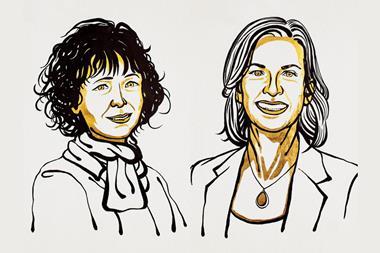

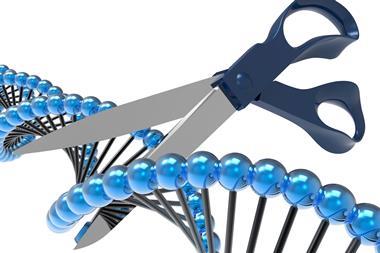

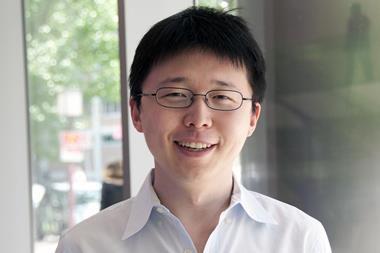
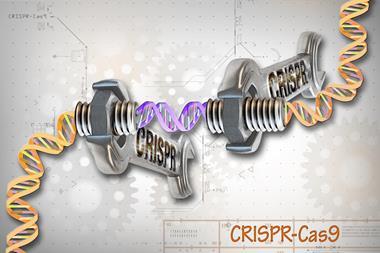




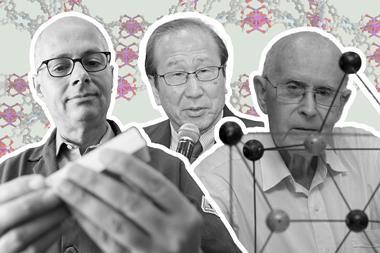

No comments yet